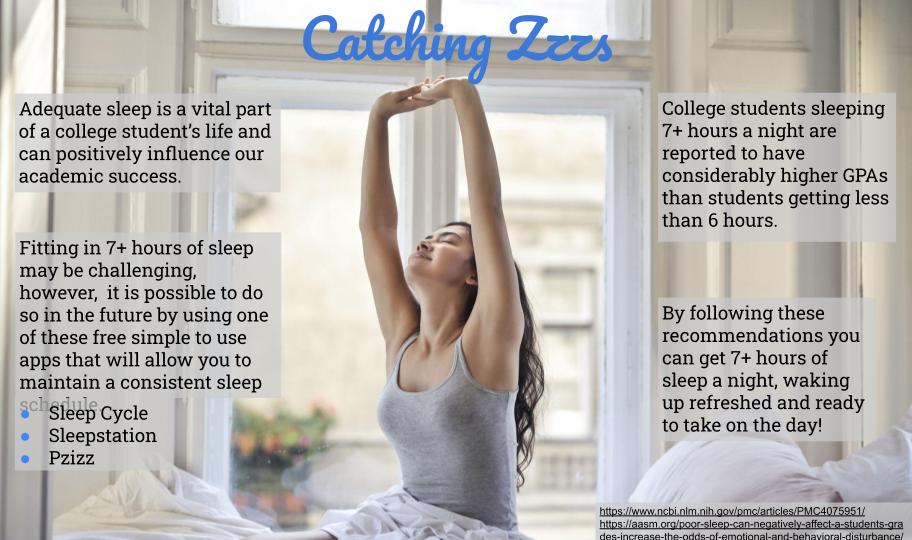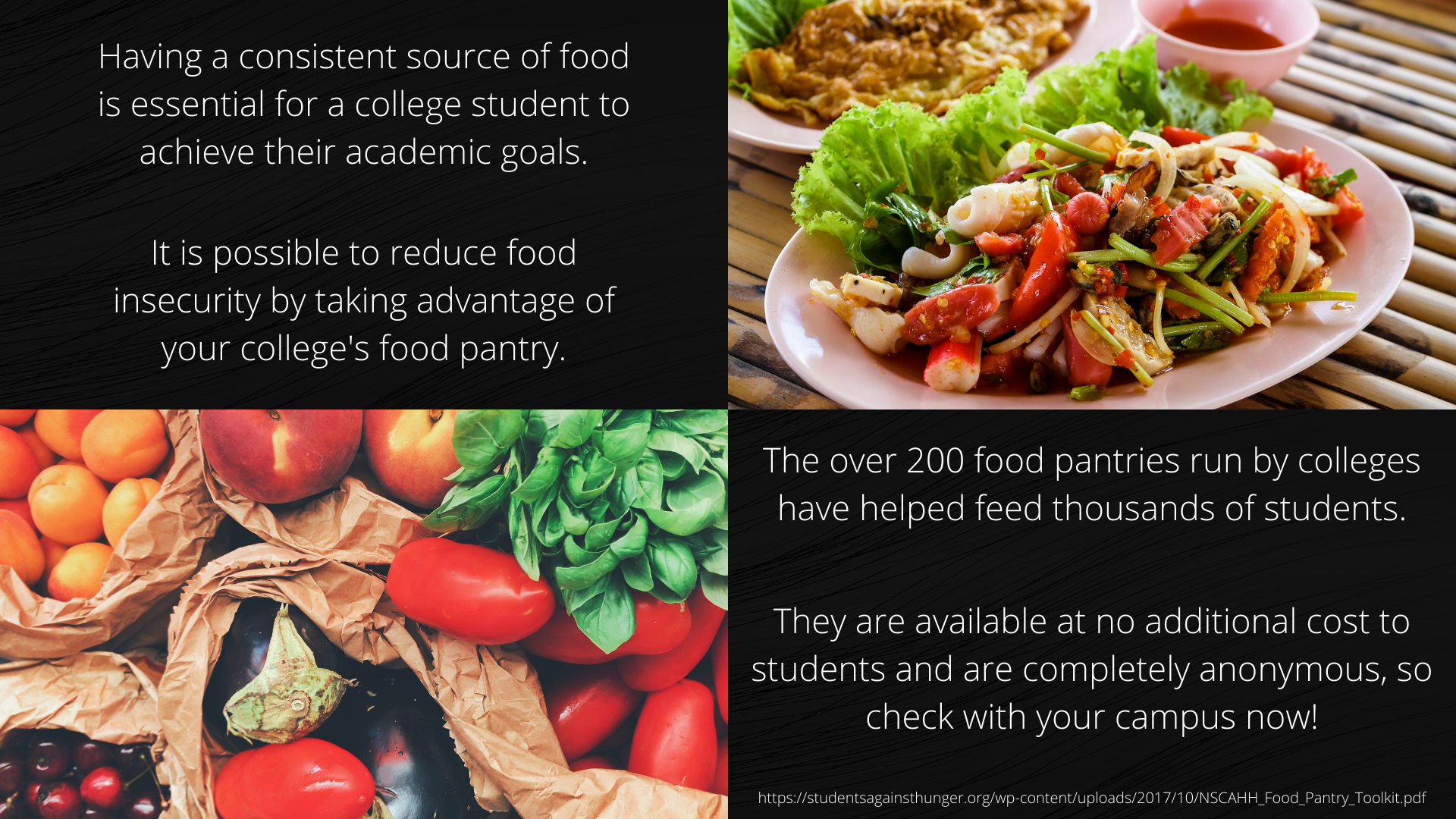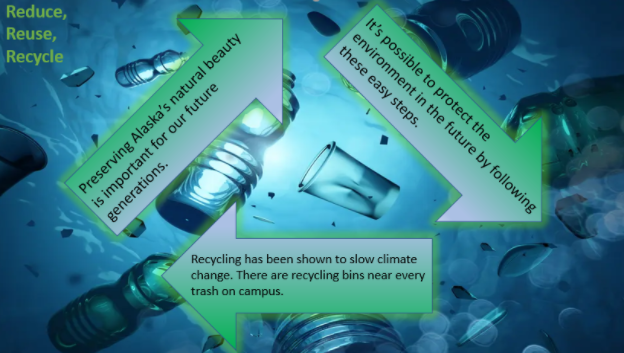13 Applications of Persuasive Hope Theory
Alejandra Salazar, Auston L. Vreeland, Amber K. Worthington, & Parker Yeates*
*Authors names are listed in alphabetical order; all authors contributed equally to this chapter
Hope appeals, specifically Persuasive Hope Theory (Chadwick, 2015), are explained in detail in Chapter 12. Persuasive Hope Theory can be used to design messages to try to persuade college students to get adequate sleep, reduce food insecurity by accessing a university’s food bank, and recycle. Examples on these topics are provided below by Alejandra Salazar, Parker Yeates, and Auston L. Vreeland, respectively.
Example by Alejandra Salazar

Persuasive Hope Theory can be used to persuade college students to sleep adequate amounts in order to promote academic success. A persuasive hope appeal message would need to influence students’ perceptions of opportunity and efficacy.
Perceptions of opportunity include perceived importance, goal congruence, possibility, and future expectation. The example message above states that adequate sleep is a vital part of a college student’s life and can positively influence academic success. This message content focuses on how the opportunity to achieve academic success through adequate sleep would affect college students, which can increase perceived importance.
The example message also focuses on how the opportunity impact’s a college student reader’s goals. College students all share a similar goal, which is to achieve academic success. The message above states that “college students sleeping 7+ hours a night are reported to have considerably higher GPAs…”. This message content can therefore increase perceived goal congruence.
Perceived possibility message content includes information that states that it is possible for the message reader to achieve the desired future outcome. The message above notes that sleeping 7+ hours may be difficult to manage; however, the message also states that it is something that can be accomplished and “…it is possible to do so in the future by…” This message content can increase perceived possibility.
The example message above also contains content designed to increase perceived future expectation. The message should say explicitly that the future will be better, which is included in the statement: “By following these recommendations you can get 7+ hours of sleep a night, waking up refreshed and ready to take on the day!”.
Perceptions of efficacy include response efficacy and self-efficacy. The example message above states that “college students sleeping 7+ hours a night are reported to have higher GPAs than students getting less than 6 hours.” This explicitly states that the recommended behavior, getting adequate sleep, will help achieve the desired future outcome of academic success, which can increase perceived response efficacy.
The example message above also provides strategies to make enacting the recommended behavior, adequate sleep, easier. This includes the suggestion to use one of the free, simple to use apps listed on the message to maintain a consistent sleep schedule. All of this information can help increase the college students’ beliefs that getting adequate sleep would be easy to implement, thus potentially increasing perceived self-efficacy.
Example by Parker Yeates

Persuasive Hope Theory can be used to persuade college students to utilize the university’s food bank in order to reduce food insecurity. A persuasive hope appeal message would need to influence students’ perceptions of opportunity and efficacy.
Perceptions of opportunity include perceived importance, goal congruence, possibility, and future expectation. The example message above states that having a consistent food source is essential for college students. This message content focuses on how the opportunity to reduce food insecurity would affect college students, which can increase perceived importance.
The example message also focuses on how the opportunity impact’s a college student reader’s goals. College students all share a similar goal, which is to achieve academic success. The message above states that a consistent food source is needed for college students to achieve their academic goals. This message content can therefore increase perceived goal congruence.
Perceived possibility message content includes information that states that it is possible for the message reader to achieve the desired future outcome. The message above notes that “it is possible to reduce food insecurity.” This message content can increase perceived possibility.
The example message above also contains content designed to increase perceived future expectation. The message should say explicitly that the future will be better. The above examples does not explicitly say that the future will be better, but does imply that the future would be better if the reader took advantage of the opportunities presented by their college’s food pantry.
Perceptions of efficacy include response efficacy and self-efficacy. The example message above states that “the over 200 food pantries run by colleges have helped feed thousands of students.” This explicitly states that the recommended behavior, using a college food pantry when facing food insecurity, will help achieve the desired future outcome of adequately fed college students, which can increase perceived response efficacy.
The example message above also provides strategies to make enacting the recommended behavior, using a college food pantry, easier. This includes the statement that the food pantries “are available at no additional cost to students and are completely anonymous”. All of this information can help increase the college students’ beliefs that using the food pantry when facing food insecurity would be easy to implement, thus potentially increasing perceived self-efficacy.
Example by Auston L. Vreeland

Persuasive Hope Theory can be used to persuade college students in Alaska to recycle in order to help preserve Alaska’s natural beauty. A persuasive hope appeal message would need to influence students’ perceptions of opportunity and efficacy.
Perceptions of opportunity include perceived importance, goal congruence, possibility, and future expectation. The example message above states that preserving Alaska’s natural beauty is important for future generations. This message content focuses on how the opportunity to preserve Alaska’s natural beauty would affect college students in Alaska and those in future generations, which can increase perceived importance.
The example message also focuses on how the opportunity impact’s a college student reader’s goals. College students in Alaska share a similar goal, which is to preserve Alaska’s natural beauty. The message above states that recycling is needed for college students to achieve this goal. This message content can therefore increase perceived goal congruence.
Perceived possibility message content includes information that states that it is possible for the message reader to achieve the desired future outcome. The message above notes that “it is possible to protect the environment in the future by…” This message content can increase perceived possibility.
The example message above also contains content designed to increase perceived future expectation. The message should say explicitly that the future will be better. The below examples does not explicitly say that the future will be better, but does imply that the future of a beautiful Alaska is possible if the reader follows the recycling recommendations.
Perceptions of efficacy include response efficacy and self-efficacy. The example message above states that “recycling has been shown to slow climate change.” This explicitly states that the recommended behavior, recycling, will help achieve the desired future outcome, which can increase perceived response efficacy.
The example message above also provides strategies to make enacting the recommended behavior, recycling, easier. This includes the statement that “there are recycling bins near every trash can on campus”. This information can help increase the college students’ beliefs that recycling would be easy to implement, thus potentially increasing perceived self-efficacy.

